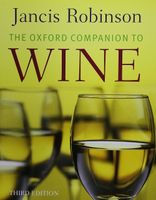Advertisement
Lead
Appears in
Published 2006
A.D.W. & J.R.
- Accum, F., Treatise on Adulteration of Food, and Culinary Poisons (London, 1820).
- Eisinger, J., ‘Early consumer protection legislation: a 17th century law prohibiting lead adulteration of wines’, Interdisciplinary Science Reviews, 16/1 (1991), 61–8.
- Gulson, B. L., et al., ‘Contribution of lead in wine to the total dietary intake of lead in humans with and without a meal: a pilot study’, Journal of Wine Research, 9/1 (1998), 5–14.
- Pliny the Elder, Natural History, trans. H. Rackham (London, 1938), book 14.


